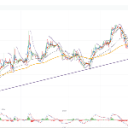In a recent article, I looked at evidence supporting the idea that strong, reliable dividend growth could be a predictor of a stock’s multibagger potential.
The only problem with this approach as an income strategy is that the yields on offer from such shares tend to be low, at least when purchased and for several years after.
For example, a dividend that rises by 10% per year will take around seven years to double. So an investor buying such a share with a 2.5% yield will have to wait seven years to achieve a 5% yield on their purchase cost – assuming nothing goes wrong in the meantime.
This means that dividend growth stocks may not be ideal for investors seeking an upfront income, perhaps to supplement a pension.
To address this issue, Alex and I have switched things around this week and shifted our focus to higher yield shares.
Using Stockopedia’s historical data, we believe we’ve found some useful factor traits that may help investors identify winning high yield shares – in other words, stocks with the potential to provide stable or rising income and positive capital returns.
How we did it
For our purposes, we’ve defined high yield as the top quartile of the UK market.
In the data set we’ve used, this corresponds to a minimum yield of 3.5% and a median yield of 6%. After excluding some anomalies, the upper end of this yield range is around 10%
Looking at this in context, I think it’s also a logical and relevant yield range for income investors to consider:
The average yield of the FTSE 100 is typically 3.5% to 4%;
Savers and gilt investors can readily get 4% or more, with no risk to their capital.
In the remainder of this article I’ll share our findings on factor-based high yield investing.
For clarity, here’s an outline of the data set we used:
We used UK share data from 2014-24;
Only companies that were listed and paid a dividend throughout that period were included;
Minimum market cap £10m.
Lower yields generate better price returns
High yielders do not always provide the strongest share price performance. They’re often more mature businesses with slower growth profiles.
In addition, they…









